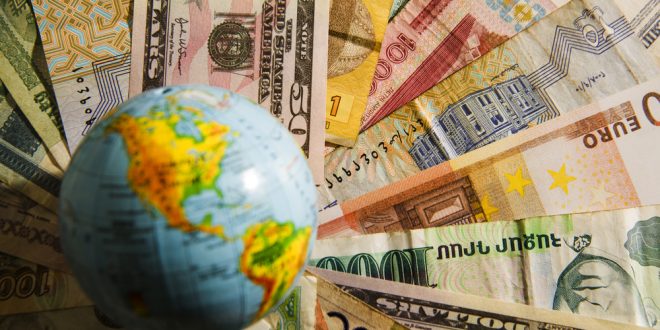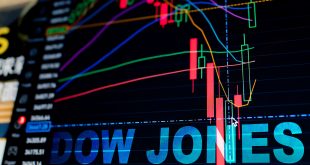August is historically the dullest month of the year for financial markets, but all five trading days (August 8-12) witnessed important market news and economic data that had a significant impact on almost all assets. The influence of the week’s economic data could continue into the future.
The CPI report was an objectively positive surprise, relative to expectations. CPI was flat in July, the first time it did not increase since May 2020. The PPI declined 0.5 percent in July, the first time it did not increase since November 2020.
Gold
Gold prices closed the week with more positive momentum on the CPI data. This week’s action in the gold market has gone as economists expected, in terms of the pace, the relative lack of volatility, and even directionally.
While there still seems to be strong resistance for gold at the key $1800 level, $1795 per ounce, since Wednesday morning, gold has held on to most of the week’s gains and could be consolidating for another push if next week presents a supportive backdrop.
Following a positive start to trading on Sunday evening, this low drove a calm and uneventful path to the gold market through Monday and Tuesday. The precious metal climbed steadily higher at a point in both sessions. Because investors displayed a little bit of skittishness and worry pre-CPI report, not wanting to get shocked by another surprisingly hot inflation reading.
US Dollar, Policy Path
As the week concluded with 1) CPI Data, 2) PPI Data and 3) University of Michigan’s Consumer Confidence readings, the following points constitute one of the possible scenarios as long as policy path is concerned:
1. the Fed could start to flatten out the policy curve as early as September by throttling back to +0.5 or +0.25% hikes through the end of the year.
2. If coming inflation data carries on this trend, it likely moves forward the terminal date at which point the Fed pauses hikes entirely. The reaction in major assets to Wednesday’s CPI.
After the cooler than expected report on Consumer Price Inflation in the US, investors across several asset classes are now more seriously considering when the Fed’s policymakers might hit the brakes on their aggressive rate hikes, so Fed’s next moves and FOMC’s next meetings are in focus as Inflation gives signals of easing.
The US Dollar which had been softening a bit at the start of the week, rolled off the table post CPI. As of Friday morning, even after a mild recovery, the US Dollar Index has pulled back to a (still expensive) 105-handle.
US Stocks
A bit of risk aversion only had the most modest impact on risk assets: the key US stock market indexes moved relatively flat on Monday and Tuesday, aside from some deeper losses in the tech-heavy NASDAQ. The keystone inflation report for July dropped on Wednesday morning and, as anticipated, was the only thing to drive any real volatility on the market. Equity investors cheered loudly after the CPI reading, and all three major US stock indexes soared higher. The move in risk was led by the same NASDAQ, which rocketed from a rough start to the week to be—as of Wednesday’s closing prices— the first index to re-enter a bull market (20% off the low.)
European Stocks
The pan-European Stoxx 600 provisionally closed fractionally above the flatline on Thursday, with oil and gas stocks climbing 2% while health care stocks fell 1%. Siemens, Thyssenkrupp, Bilfinger, Novozymes, Rabobank, Zurich Insurance, M&G, Deutsche Telekom and Aegon were among the major companies reporting earnings.
Safe Haven Status
The moves seen post CPI in gold and the dollar as prime safe-havens, and in risk assets like US stocks, generally, align with what was expected. The alleviation of inflation pressures on the US consumer and economy certainly will not push the Fed to pull back now from their crusade against inflation that has been mostly effectuated by historically high rate hikes of +0.75%. The expectation seems to be that the FOMC will be encouraged to finish the fight and not pause from increasing its target overnight rates until that point.
The US Dollar has weakened after a major catalyst for this summer’s 20-year record breaker of a bull run was higher Fed/USD borrowing rates, making the dollar all the more attractive as a yield-bearing investment relative to its peers.
Oil
Oil dipped on Friday as schizophrenic traders wrestled on one hand with near-term demand fears and on the other with the potential of demand escalating this winter.
Iran could return to the global market, and that reinforces the numerous conflicting factors that led to Friday’s daily losses being offset by oil posting the biggest weekly gain since April.
WTI fell 2.4 percent to settle at $92.09 per barrel (but ended the week 3.5 percent higher), while Brent shed 1.5 percent to $98.15 per barrel (but ended the week up 3.4 percent). A main source of inspiration for traders on Friday was Rapidan Energy Group, which stated in a note that the US and Iran have made enough incremental progress for a shift in the base case expectations for the timing of a nuclear deal, from the first quarter of 2023 to the fourth quarter of 2022. To conclude, oil demand is poised to ebb and flow, but supply is still the main concern, particularly in Europe. As for America,
Cryptocurrencies
After a strong rally on Thursday, the crypto market saw some profit booking on Friday. Bitcoin breathed below $24,000, whereas Ethereum held at the $1,900 mark ahead of its much-awaited merge buzz.
The cryptocurrency market began the week with low momentum and continued trending sideways mid-week. Nevertheless, there are cryptos which have loads to look ahead to, that might make positive aspects in direction of the tip of the week.
Bitcoin has been trading close to the 20-day exponential moving average (EMA) of $22,719 for the past few days, indicating a tough battle between the bulls and the bears. Although the bulls have held the level, they have not been able to achieve a strong rebound off it. This indicates a lack of demand at higher levels. Bitcoin is trading at $24434 at the time of writing.
 Noor Trends News, Technical Analysis, Educational Tools and Recommendations
Noor Trends News, Technical Analysis, Educational Tools and Recommendations





